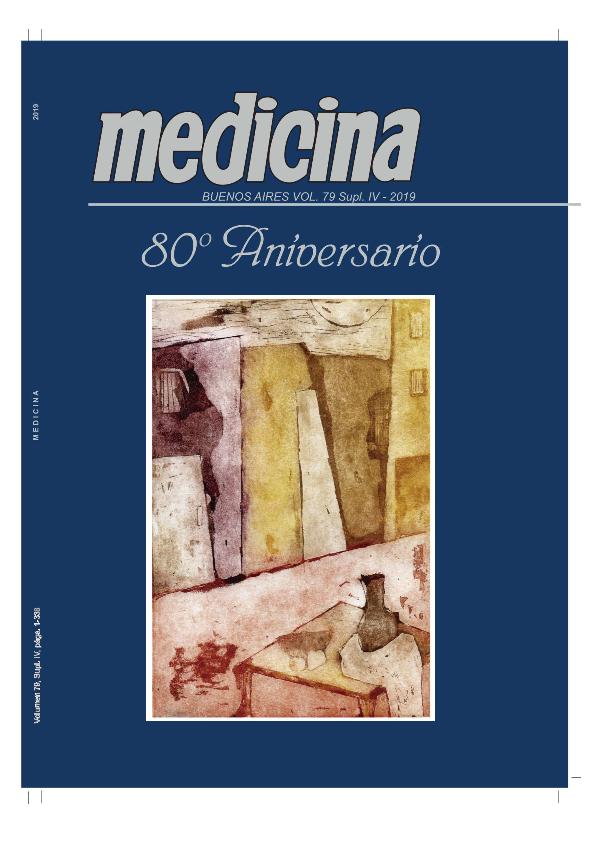Evento
Incorporation of carbamazepine, a non-Ionic drug, in layered double hydroxides
Peralta, Maria Florencia ; Scolari, Ivana Romina
; Scolari, Ivana Romina ; Granero, Gladys Ester
; Granero, Gladys Ester ; Crivello, Mónica Elsie
; Crivello, Mónica Elsie ; Mendieta, Silvia Nazaret
; Mendieta, Silvia Nazaret
 ; Scolari, Ivana Romina
; Scolari, Ivana Romina ; Granero, Gladys Ester
; Granero, Gladys Ester ; Crivello, Mónica Elsie
; Crivello, Mónica Elsie ; Mendieta, Silvia Nazaret
; Mendieta, Silvia Nazaret
Colaboradores:
Costas, Mónica; Marino, Gabriela; Azurmendi, Pablo
Tipo del evento:
Reunión
Nombre del evento:
LXIV Reunión Anual de la Sociedad Argentina de Investigación Clínica; LI Reunión Anual de la Asociación Argentina de Farmacología Experimenta; XXI Reunión Anual de la Sociedad Argentina de Biología; XXXI Reunión Anual de la Sociedad Argentina de Protozoología; IX Reunión Anual de la Asociación Argentina de Nanomedicinas y VI Reunión Científica Regional de la Asociación Argentina de Ciencia y Tecnología de Animales de Laboratorio
Fecha del evento:
13/11/2019
Institución Organizadora:
Sociedad Argentina de Investigación Clínica;
Sociedad Argentina de Protozoología;
Asociación Argentina de Farmacología Experimental;
Sociedad Argentina de Biología;
Asociación Argentina de Ciencia y Tecnología de Animales de Laboratorio;
Asociación Argentina de Nanomedicinas;
Título de la revista:
Medicina (Buenos Aires)
Editorial:
Fundación Revista Medicina
ISSN:
0025-7680
e-ISSN:
1669-9106
Idioma:
Inglés
Clasificación temática:
Resumen
Layered double hydroxides (LDHs) are inorganic solids composed of cationic layers and inter-lamellar spaces filled with negative ions. In the last years, LDHs have gained interest as carriers of anionic drugs, which replace the interlayers ions. Most anti-tumor drugs are systemically administered and this produces many side effects. LDHs could protect and target them to the tumor; however, most anti-tumor drugs have no charge and thus, they are not able to enter into the interlamellar space. Aiming to overcome this problem, a surfactant was used in this work. Carbamazepine (CBZ), an anticonvulsant drug with a formal charge of 0, has shown efficacy against some solid cancer cell lines; it also produces alterations in red blood cells. Here, this drug was used as a model drug to be load into the system. CBZ was incorporated into HDLs, composed of Mg2-Al-NO3, in micelles of sodium cholate (a surfactant with negative charge) by using different methods: ionic exchange, coprecipitation and reconstruction. Different amounts of surfactant were assessed, at a critical micelle concentration. X-ray powder diffractograms showed that the drug incorporated in the system when synthesized by ionic exchange and reconstruction, but not by co-precipitation. The hydrodynamic sizes of the HDLs loaded with the drug in the micelles were measured by dynamic light scattering. The amount of CBZ loaded in the system was determined by UV and found to be ~2 %, which represents almost 100 % of the original amount of drug. Assays of drug released were done in Franz Cells with a Simulated Body Fluid (pH 7.4) and an acetate buffer (pH 4.8) in order to analyze the protector role of the system in the blood and the drug release inside the tumor cells respectively. Results suggest that LDHs are promising drug delivery carriers by allowing the incorporation of all kinds of drugs and not only of that with anionic charge.
Palabras clave:
LAYERED DOUBLE HYDROXIDES
,
CARBAMAZEPINE
,
DRUG DELIVERY
Archivos asociados
Licencia
Identificadores
Colecciones
Eventos(CITEQ)
Eventos de CENTRO DE INVESTIGACION Y TECNOLOGIA QUIMICA
Eventos de CENTRO DE INVESTIGACION Y TECNOLOGIA QUIMICA
Citación
Incorporation of carbamazepine, a non-Ionic drug, in layered double hydroxides; LXIV Reunión Anual de la Sociedad Argentina de Investigación Clínica; LI Reunión Anual de la Asociación Argentina de Farmacología Experimenta; XXI Reunión Anual de la Sociedad Argentina de Biología; XXXI Reunión Anual de la Sociedad Argentina de Protozoología; IX Reunión Anual de la Asociación Argentina de Nanomedicinas y VI Reunión Científica Regional de la Asociación Argentina de Ciencia y Tecnología de Animales de Laboratorio; Mar del Plata; Argentina; 2019; 156-156
Compartir



